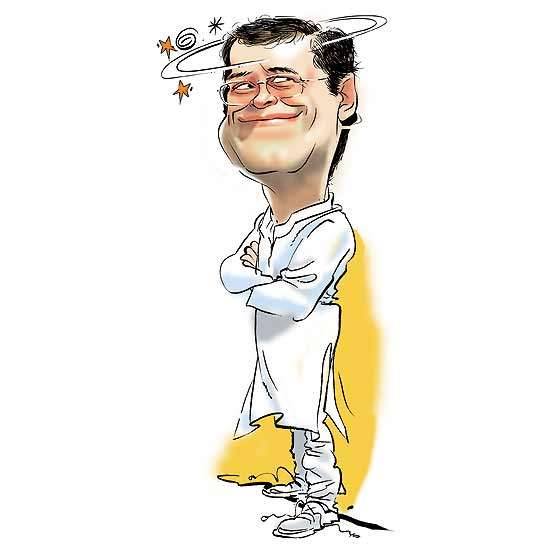This article appeared first on Rightlog.in on April 24, 2017 under the title: “3 conditions laid down by the OPS camp that are making the EPS camp jittery”
OPS, EPS, and VKS the main dramatis personae in the never-ending soap opera being played out in Tamil Nadu have been involved in so many twists, turns, and intrigue that most political commentators have found it difficult to stick their neck out and predict what might happen next in Tamil Nadu. What is however quite clear is, that in all of this the biggest casualties have been governance and democracy. Like someone said:
OPS, EPS, and VKS have ensured that in TN governance and democracy are presently on UPS”
Late J. Jayalalithaa who ran the party with an iron hand and brooked no opposition however is guilty of having hamstrung the party by not grooming a second rung leadership or at least naming a successor. VK Sasikala (VKS) has no credentials other than having been Jaya’s friend and personal assistant. O. Pannerselvam (OPS) owed his brief time as CM to Jaya’s largesse. He knew he was merely a placeholder, keeping the seat warm till Amma came back from her incarceration in Bengaluru. Although he initially emerged as a consensus candidate as CM soon after Jaya’s demise he was soon shunted out by the VKS faction who felt he wasn’t “pliant” enough for their liking particularly after VKS realized post her arrest that she wouldn’t be able to control OPS from her prison cell in Bengaluru.
The present incumbent Edapadi Palaniswami (EPS) who was installed by VKS after an unceremonious coup that led to OPS being shown the door was thought to be a loyalist of the Manargudi Mafia (as VKS and her extended family are known in TN) and to his credit he did stick to the script by accepting TTV Dinakaran as Deputy General Secretary of the AIADMK a post created specifically to ensure that VKS could remote control the party and the government from her “prison-office”.
However a series of events have led to the present impasse – First, the electoral poll panel repealed the RK Nagar assembly polls when it emerged that TTV Dinakaran allegedly tried to bribe the voters and influence the verdict. The second blow was the EC bribery case against Dinakaran followed immediately by an ED court framing charges against him in a financial irregularity case dating back to some 20 years. As soon as EPS realized that Dinakaran would be caught up in long protracted court cases he allegedly engineered a faction within the party to rebel against VKS and Dinakaran along with sending out feelers to the OPS faction in a possible attempt at a merger ostensibly because that would mean they would be able to regain the iconic “Two-leaf” election symbol of the AIADMK.
Several rounds of talks between the two factions has led to nothing more than a stalemate as both factions are reluctant to give up on their individual stands and if latest reports are to be believed have struck intractable notes in their talks and any forward movement will be possible only if one or both factions give-in or be ready to make a few concessions to the other.
OPS also clearly owns the moral high ground as was evident from how people welcomed him with genuine warmth during campaigning for the now recalled RK Nagar by-election.
The OPS camp has also laid down 3 specific conditions all of which that have not gone down well with the EPS faction. These include:
- Formal expulsion of Sasikala, Dinakaran and thirty other members of the extended Manargudi family from the party. Although the EPS camp did announce expulsion of VKS and Dinakaran from the party, the OPS camp is insisting on a formal party note that legalizes this expulsion
- CBI probe into the death of former CM J. Jayalalitha specifically relating to the events leading up to her admission into Apollo and what transpired inside the hospital premises and the ICU.
- Withdrawal of the affidavits submitted to the Election Commission declaring Sasikala and Dinakaran as party general secretary and deputy general secretary, respectively.
In addition to the above conditions unconfirmed reports have also hinted at the OPS camp wanting to take over the three key posts within the party and the government – Chief Minister, Party General Secretary and Presidium chairman with EPS getting the post of the Deputy Chief Minister. This has clearly miffed the EPS camp. An EPS faction insider had this to say about the OPS demand – “Have you heard anywhere about the party in government with 122 lawmakers merging with a party with eleven MLAs?” Clearly for the EPS camp this is also becoming an ego issue.
Then there is also the caste angle – OPS belongs to the influential “Thevar” community and EPS to the equally influential “Gounder” community. Both communities have for long been pillars of support for the AIADMK particularly in Southern and Western Tamil Nadu. Replacing a Gounder with a Thevar now may not go down well with the former community and could seriously impact the election fortunes of the AIADMK.
Finally if reports are to be believed VKS still has the support of at least 25 to 30 members within the AIADMK most of them family members and/or loyalists who are actively working to ensure that this attempt at a merger fails.
As this intriguing game of chess is played out on the chequered political landscape of Tamil Nadu no clear answers are emerging. However for Sasikala and her extended Manargudi family these are desperate times. Knowing her amazing survival instincts what can be predicted with certainty however is that while she may well be on her last limb she is definitely not going down without a fight.

